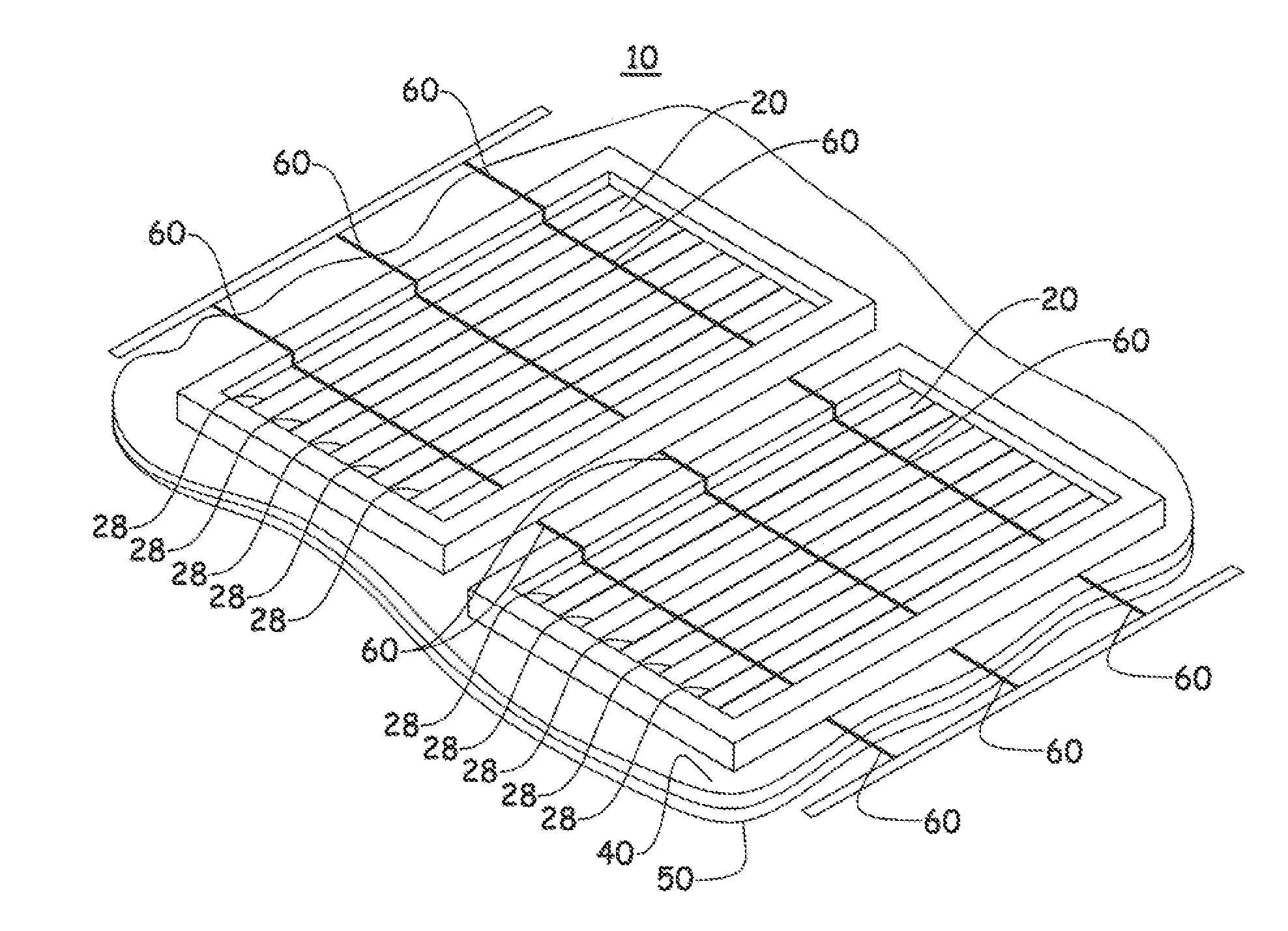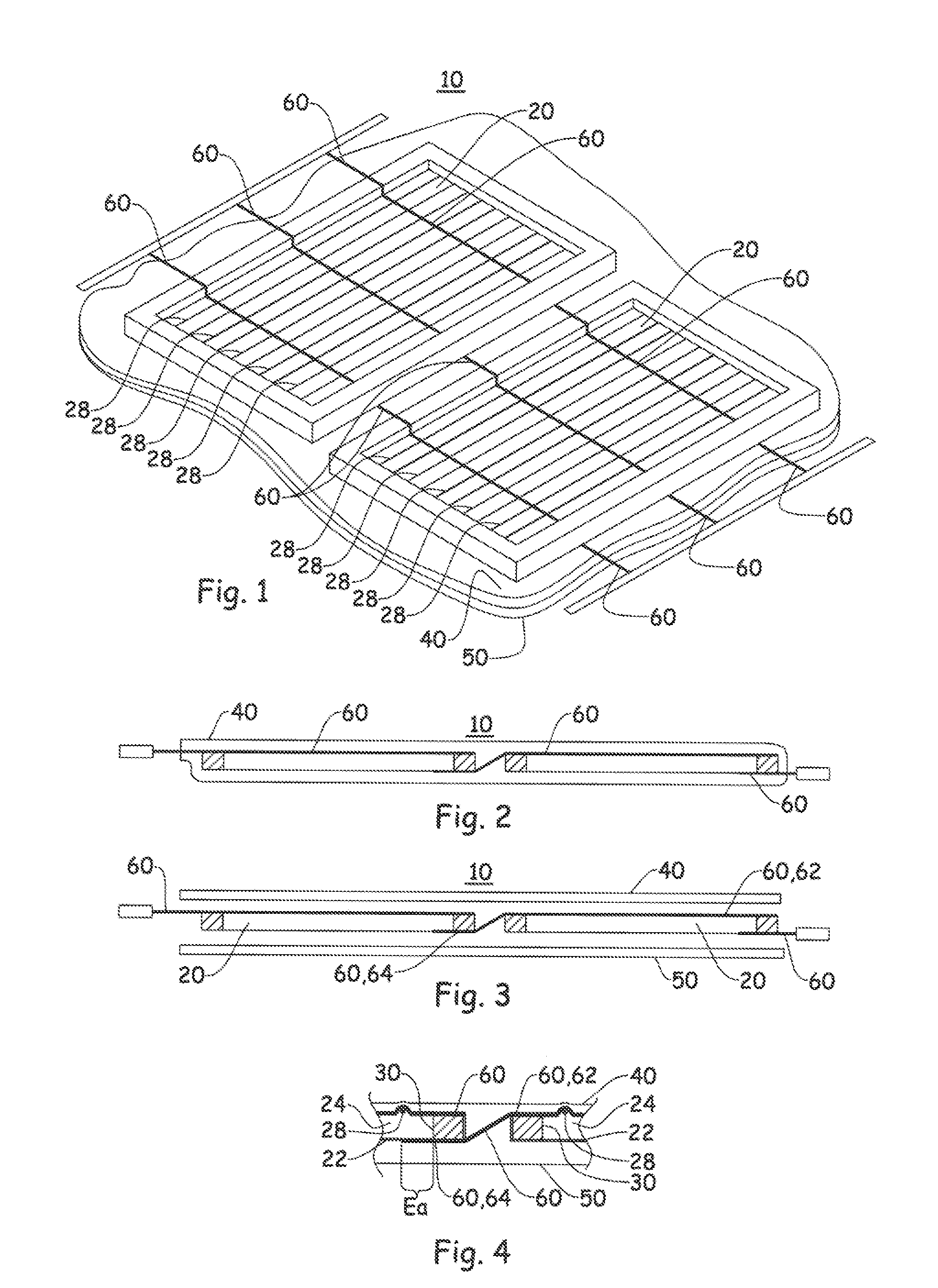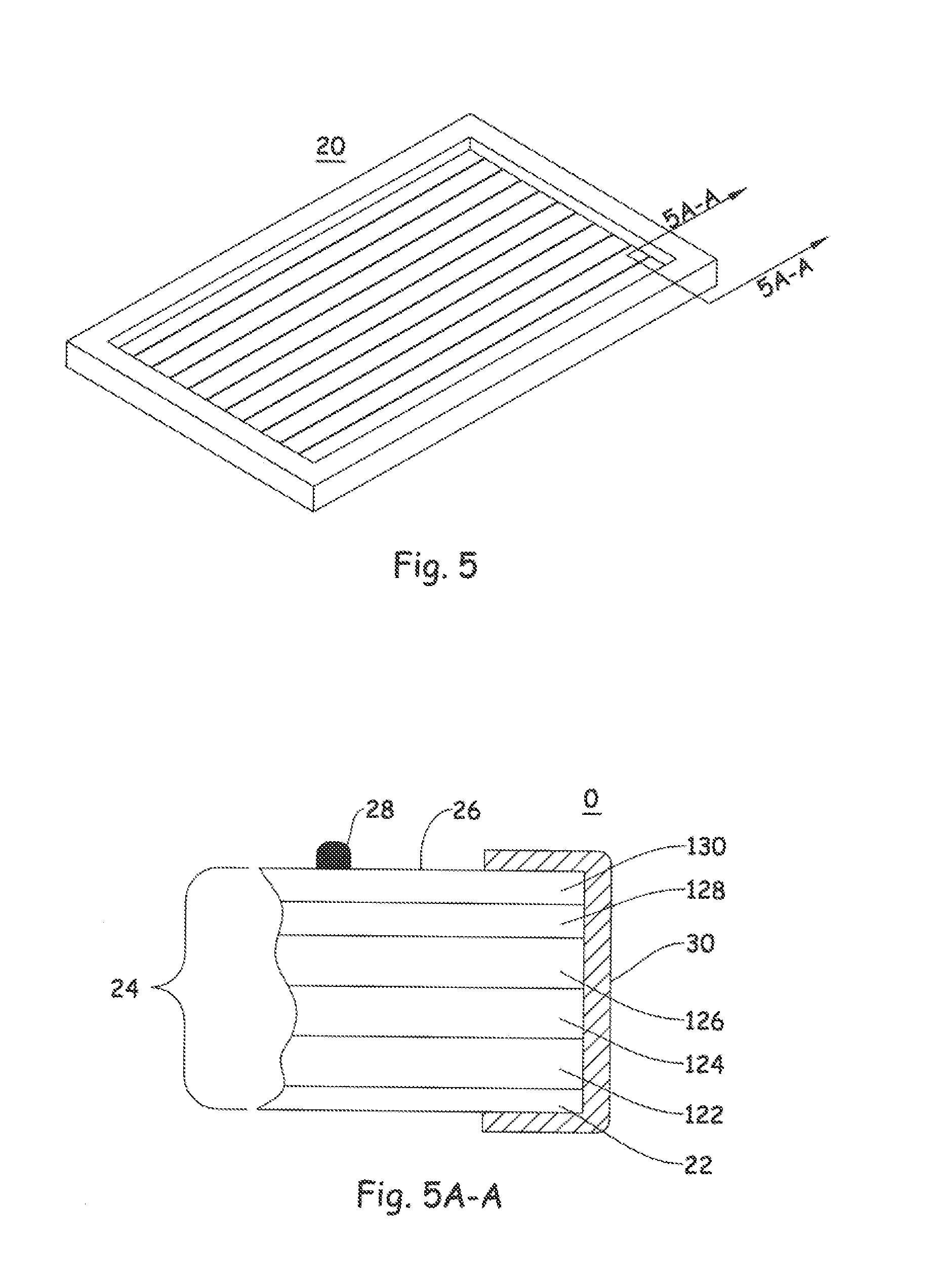Photovoltaic cell assembly and method
- Summary
- Abstract
- Description
- Claims
- Application Information
AI Technical Summary
Benefits of technology
Problems solved by technology
Method used
Image
Examples
examples
[0054]In the following paragraphs, five (5) examples of the present invention and one (1) comparative example are presented. The following examples are provided to illustrate the invention but are not intended to limit the scope thereof.
examples generally
[0055]For the purpose of these examples, CIGS type solar cells (50 mm×210 mm), on stainless steel substrate (e.g. conductive substrate layer 22), are obtained from Global Solar Inc. The cells are cut into smaller cells 50 mm (“L”)×25 mm (“W”). A Ni / Ag grid (e.g. collection structure 28) is applied to the top surface 26 of the cell onto the transparent conductive layer (ITO). In this case thirty (30) lines spanning across the larger cell dimension. The cells 20 are scribed down to the Mo layer (122) near the edge of the cells (e.g. from the outer edge, inboard about 1.0 to 2.0 mm). It is believed that use of such scribing is common in industry because of damage due from cutting the cell 20.
[0056]The symbols and short-hand notations herein are defined as:
[0057]VCC=voltage−open circuit
[0058]ISC=current−short circuit
[0059]FF=fill factor
[0060]Eff=efficiency
[0061]RS=series resistance
[0062]Rsh=shunt (parallel) resistance
[0063]RP=Rsh
[0064]Pmax−Power (watts)
[0065]JSC=current−short circuit p...
example 1
[0066]Two cells with the grids shown in FIG. 7 were treated on all four edges with polyimide (“kapton”®) tape (e.g. non-conductive layer portion 30) in such a manner that it was wrapped around the edge and covered the scribe section on the top of the cell. Three pieces of Ag-coated wire (30 AWG; e.g. conductive elements 60) was then applied to the surface of cell A and extended to the bottom of cell B, where the ends were attached locally to the stainless steel substrate using kapton tape (prior to the application of the encapsulants 40, 50). In a similar fashion, three pieces of 30 AWG Sn-coated wire were applied to the surface of cell A and extended beyond the cell edge. The wires were applied in a direction perpendicular to the direction of the fingers of the silver grid. No bonding material was used to attach the wire to the surface of the cells, (although a small piece of tape may be used to hold the elements 60 in-place until the lamination process can occur). The two cell ass...
PUM
 Login to View More
Login to View More Abstract
Description
Claims
Application Information
 Login to View More
Login to View More - R&D
- Intellectual Property
- Life Sciences
- Materials
- Tech Scout
- Unparalleled Data Quality
- Higher Quality Content
- 60% Fewer Hallucinations
Browse by: Latest US Patents, China's latest patents, Technical Efficacy Thesaurus, Application Domain, Technology Topic, Popular Technical Reports.
© 2025 PatSnap. All rights reserved.Legal|Privacy policy|Modern Slavery Act Transparency Statement|Sitemap|About US| Contact US: help@patsnap.com



